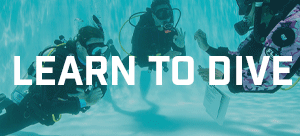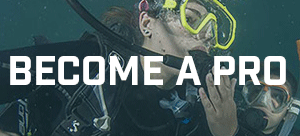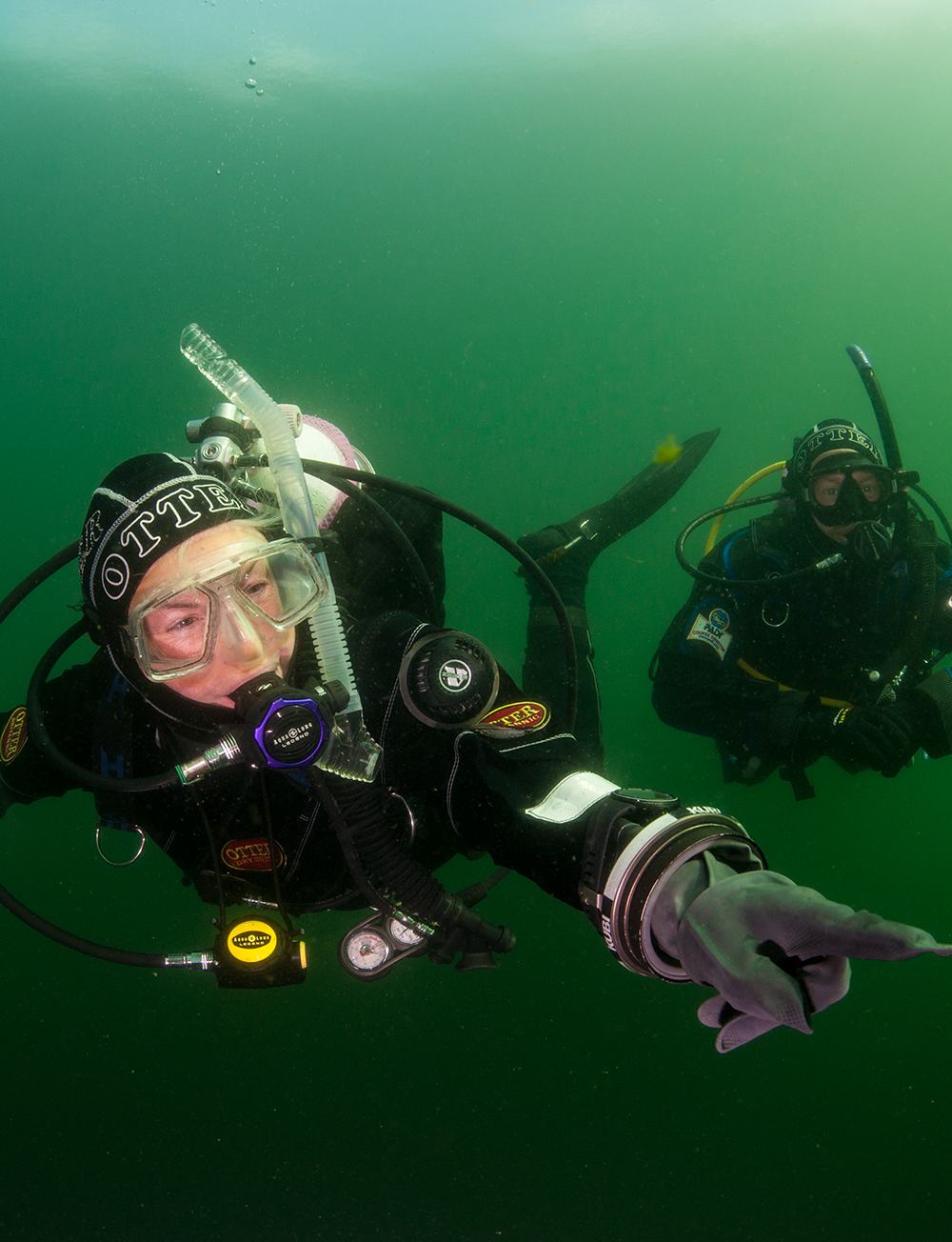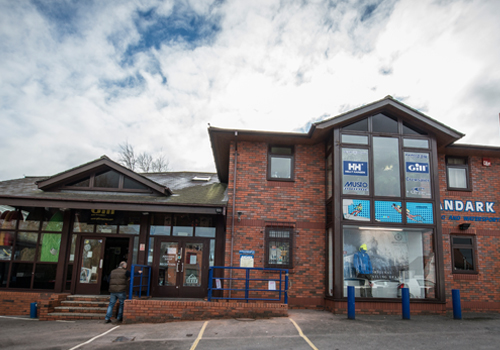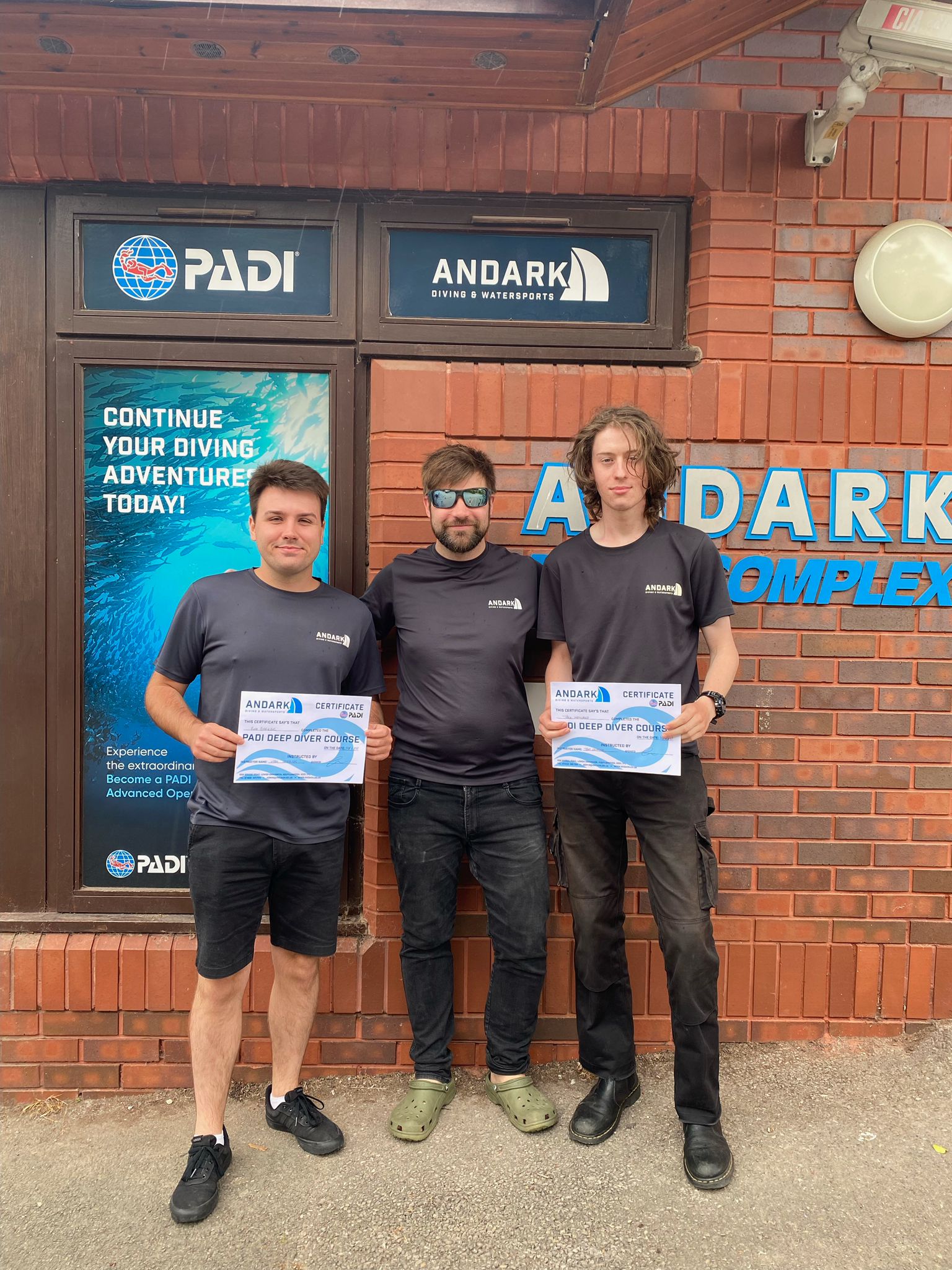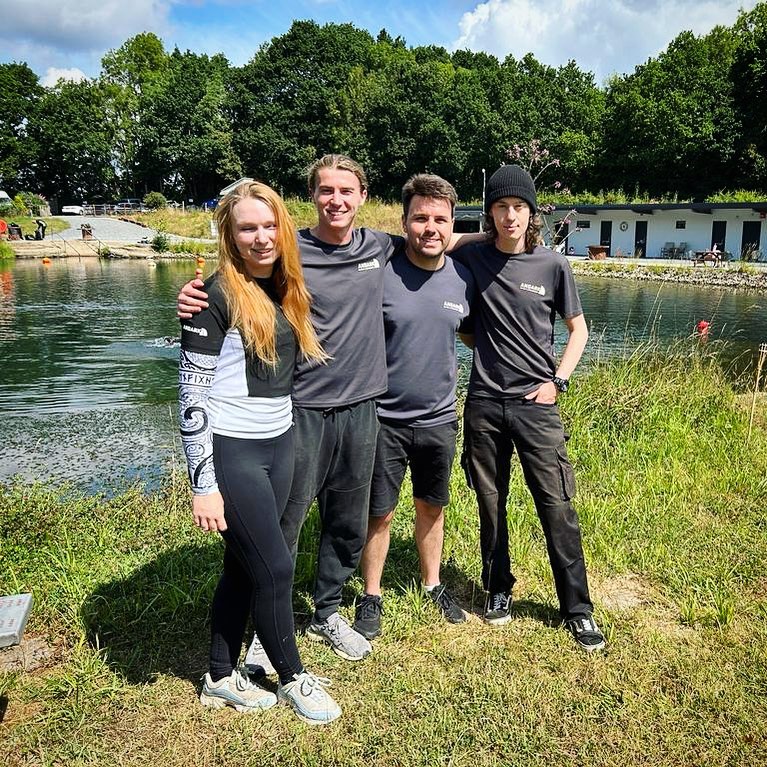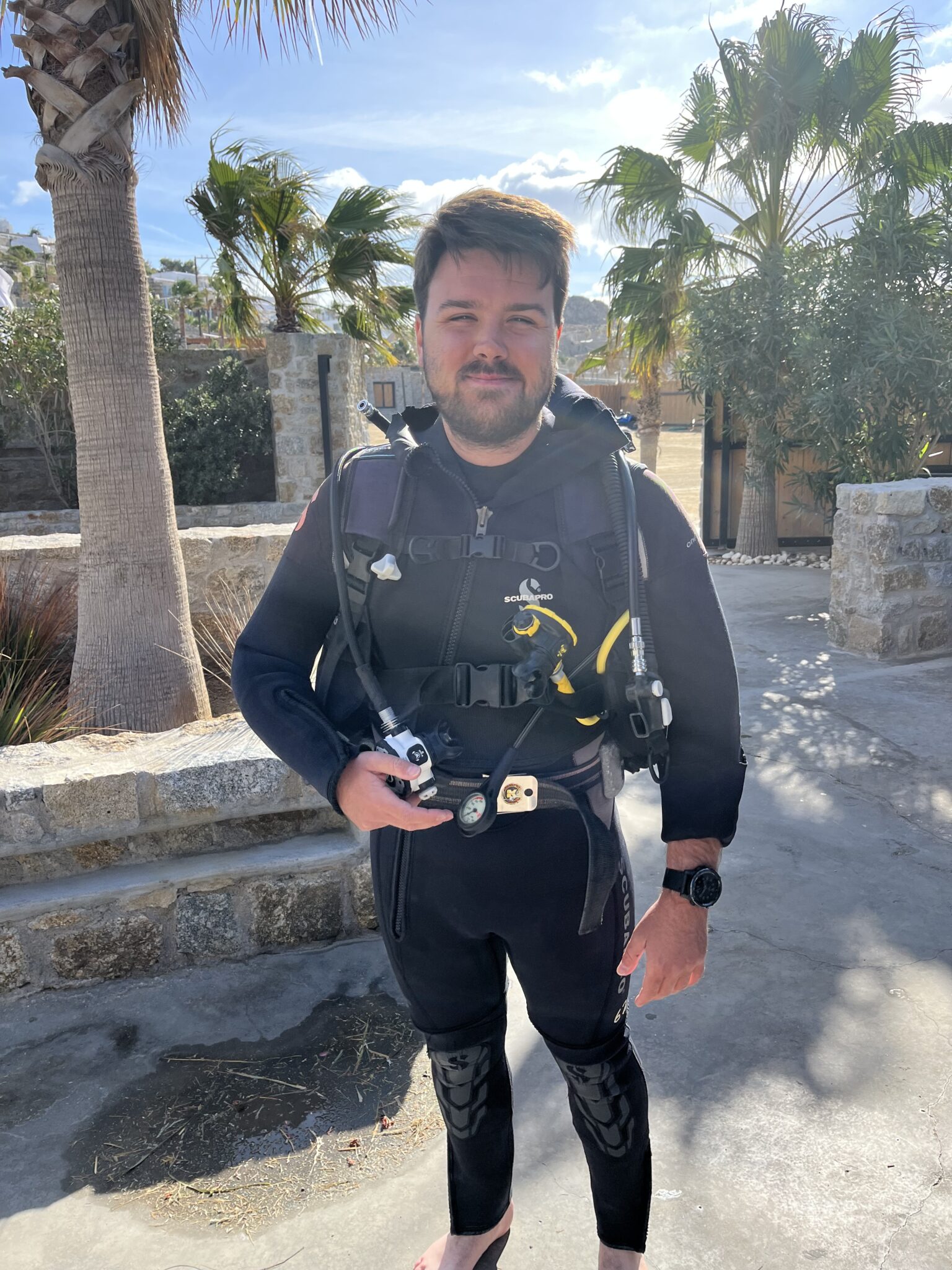After completing my orientation in the pool during the week, I started with a dive in Andark lake on a sunny Saturday to start Dive 1 of my Dry Suit Diver course. The visibility was low, but much better than it had been, and we were diving right to the bottom at 6.5 meters…
ANDARK SCHOLAR DIVE CENTRE DUTIES
Having officially started the Divemaster Scholarship a few weeks ago, the main priority has been on learning the roles and responsibilities expected of us over the summer. The generic tasks are quite simple but keep us relatively busy; filling cylinders, maintaining…
PADI DEEP DIVER COURSE
The Deep Diver specialty had been on my radar for a while, as the extension to the maximum limit of recreational diving opens a range of opportunities. While many will say the best of diving can be seen in shallower waters, the skills required to be certified to deeper depths ensures a…
JACK MAYNARD – Andark Divemaster Scholarship 2023
My favourite part of diving is the aquatic life in their natural habitat. As amazing as documentaries are, to me there’s nothing like being face to face with a fresh water fish, or catching a glimpse of a large sturgeon as it slides off into another part of Andark Lake!…
RAVEN HEANEY – Andark Divemaster Scholarship 2023
By the end of the summer, I hope to have gained not only my PADI Divemaster qualification but also be ready to undertake the HSE Scuba Training as I feel it would be beneficial to my future career goals to work as a Stuntwoman…
BEN BARKER – Andark Divemaster Scholarship 2023
I remember the first time I took breaths in the ocean, and as I stared out into the blue water, I struggled to take a second breath as my jaw was hanging open in amazement…
PSAI Advanced Nitrox and Decompression Procedures
Jake writes about his first experience with technical diving at the National Diving and Activity Centre, Chepstow.
This course serves as an entrance to the world of technical diving. The jump from recreational diving is huge and as a result, three days are required to develop the skills and the change of attitude required to conduct safe diving practices. The process started with studying the manual, which everyone really looks forward to at the start of every course.
Friday
The first day of the course involved no diving (fortunately as I had forgot my drysuit), the purpose of the day was to understand the information learnt prior to the course and to discuss kit setup. We all discussed our own gear, and allowed everyone to view the different ways the twinsets had been set up and regulators routed. Allowing people to comment how it could be done more efficiently or what problems it could present in different scenarios. The most important lesson learnt was that for kit configuration there isn’t a set way that is correct, everyone’s kit was slightly different as it suited what they found most comfortable.
Saturday
By this point we were all eager to see how the modifications would affect us in-water. We had two dives to do, and a lot of skills to practice. Mike and Carl wanted us to build up muscle memory so that in an emergency, the skills would be fluid and done with precision. This involved sitting on the platforms at Chepstow practicing shut down drills, swapping between regulators, finning techniques and many more. The introduction of a stage cylinder altered the way we all dived and the use of an extra regulator took a while to get used to.
Sunday
The final day, all our dive planning had led to this day. We only had to do one deeper dive, so we took the day slow and kept emphasis on keeping calm and relaxed throughout. The dive planned was to 43m, with a bottom time of 15 minutes and a total dive time of 38 minutes. We were going to simulate decompression for a longer dive time to develop greater experience with ascent rates and stopping at set depths. The dive was a success, with me discovering what narcosis feels like at the amusement of everyone else. That is something that is unfortunately going to be brought up in every conversation.
I believe I can speak on behalf of the other students and thank Mike Rushworth and Carl Yates for a seamless course that tested our understanding and abilities and provided a solid foundation for safe diving practices.
Scholars Dive the Kyarra
Myself, Jake and Lucy were thrilled to have the opportunity to dive the wreck of the Kyarra in Swanage, Dorset. The liner Kyarra was a casualty clearing ship, with a quick-firing gun mounted on her stern as a defense against U-boats.
On the 26th May 1918 she was ordered to embark 1000 war-wounded Aussie soldiers in Devonport and return them to Sydney. However, she was hit by a German submarine and sank within 7 minutes.
On the 15th August we travelled down to Swanage pier, and boarded the Divers Down boat, ready to discover the Kyarra. We were diving on 32% Nitrox to give us more time explore the Kyarra. Once we had reached the site we entered the water safely and descended 23 meters down a line onto the ships port railing. There was a slight current as we were descending but nothing that made the descent difficult or dangerous. We observed many interesting features and wildlife, for example we saw the remains of the old bollards in the aft hold area, in which one of them had a crab living inside it! We also saw the rudder post and proceeded to swim to across the Kyarra’s hull. There were various fish living around the wreck.
The visibility was fairly good and overall was a very interesting dive. We agreed prior to the dive to start making our ascent when the first person reached 100 bar, which we successfully managed including a safety stop at 5 meters. During the safety stop we launched a delayed SMB so that the skipper could move the boat close to us to pick us up. Once the boat was close enough we held on the line of the side of the boat and proceeded to the back of the boat where the lift was. When we all were back on board we were all very happy about the dive, and made our way back to Swanage pier!
By Natasha
Scholars Visit to the RNLI, Poole
Between 2011 and 2014 there were 50 fatal diving accidents in the UK, and almost all of them were preventable
This is the figure that stuck with me most after our trip to the RNLI. They are now running a campaign which is trying to prevent more diving accidents from occurring in UK waters, and we were lucky enough to be invited along to see the work they do for ourselves.
The charity was set up in 1824 by Sir William Hillary, with just a small group of sailors on the Isle of Man. It became a foundation that now has 238 lifeboat stations and raises £174 million each year. We started the day with a tour around the main college where all volunteers are trained. On the tour, we were taken to see the wave pool that is used for training. All different kinds of weather conditions can be simulated here, and boats can be used in the pool to practice capsizes, making the conditions as realistic as possible. We then had a go in the simulator. This is a room designed like one of the life boats, with screens instead of windows showing the sea. I was given the role of steering the boat first, and I soon learned I’m even worse at steering boats than cars! Different areas and weather conditions can be simulated, and the training crew have to respond to emergencies. Check out our Facebook page for a video!


The next part of the day was seeing inside RNLI HQ. Here, we saw all the different departments that help keep the RNLI running, such as media, video editing, and fundraising. We were shown the accident prevention campaign aimed at different activities around UK coast: hiking, kayaking and especially scuba diving. We also learned about the work being done abroad in third world countries, such a Bangladesh, where a person drowns every 2 seconds. Here, programs have been set up to warn people of the risks surrounding water, and how to handle any situations when they do occur.
The last part of our tour was to see the all-weather lifeboat station, including where lifeboats are built and serviced. This was built in 2015 as a way for the RNLI to be able to build their own boats withthe standard of technology they needed, as well as saving the organisation £3 million a year. 3 new lifeboats are made here each year, as well as 398 other lifeboats in the fleet being tested and serviced.


Overall I found the visit to the RNLI eye-opening, as it made me think about how taking the time to have a thorough buddy check, carrying the correct equipment and diving safely within PADI limits can allow me to prevent incidents that could potentially be fatal.
Scholarship Visit to HM Coastguard, Portland
Diving is one of the safest recreational activities, if the rules are followed properly. However, sometimes unexpected situations can occur, in which the emergency services are required. We were lucky enough to see the HM coastguard base in Portland on the 25th June, just a few days before it shut down.
We were warmly welcomed into the base, and shown around the communal areas where the staff can wait for emergency calls during their shift. After, we were taken into the back where the helicopters are kept, which were a lot larger than we thought. One of the pilots, Jerry Tribe kindly allowed us to sit in the cockpit and explained the extensive safety checks and the basics of how to fly a helicopter. He also explained the more details about the helicopter itself, including the physics behind it, fuel consumption and he pointed out where all of the external cameras were. Fraser Rowbotham sat with us in the main cab and showed us where all the medical equipment was, and the procedures followed when rescuing someone, including how they use the winch system. He showed us the equipment used to rescue someone at sea, and how he would attach them to it to safely elevate them into the helicopter.
To finish off this memorable day we took some photos, which you can see below, and we even managed to see the helicopter take off as they were off to do some practice using the winch offshore.
Lastly we’d like to thank Fraser, Jerry and to the rest of the staff at the HM coastguard for such a great day!

